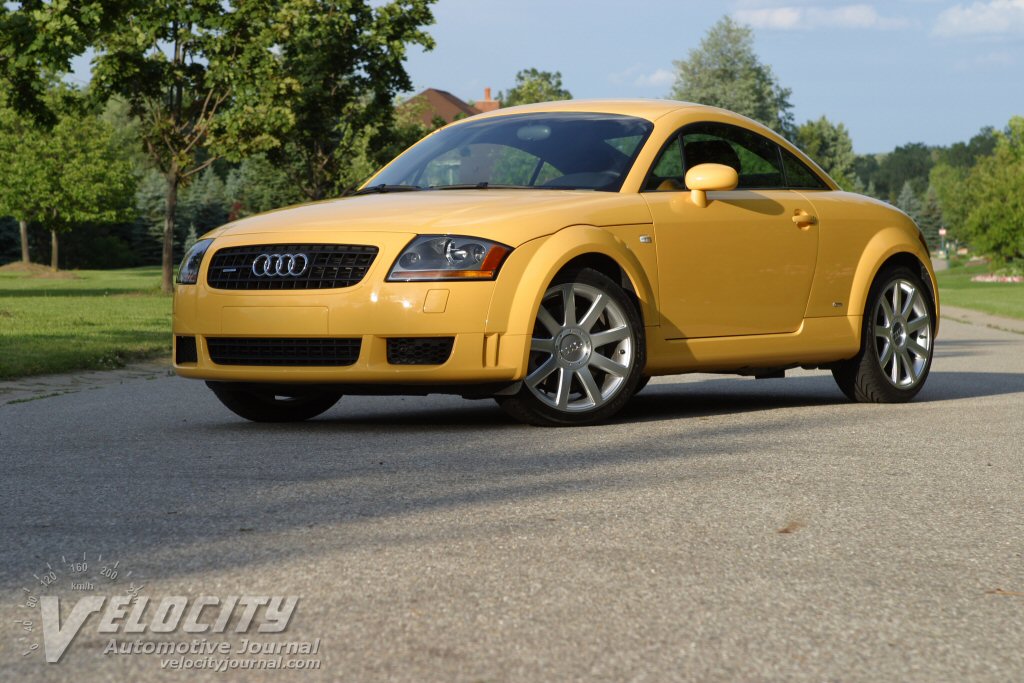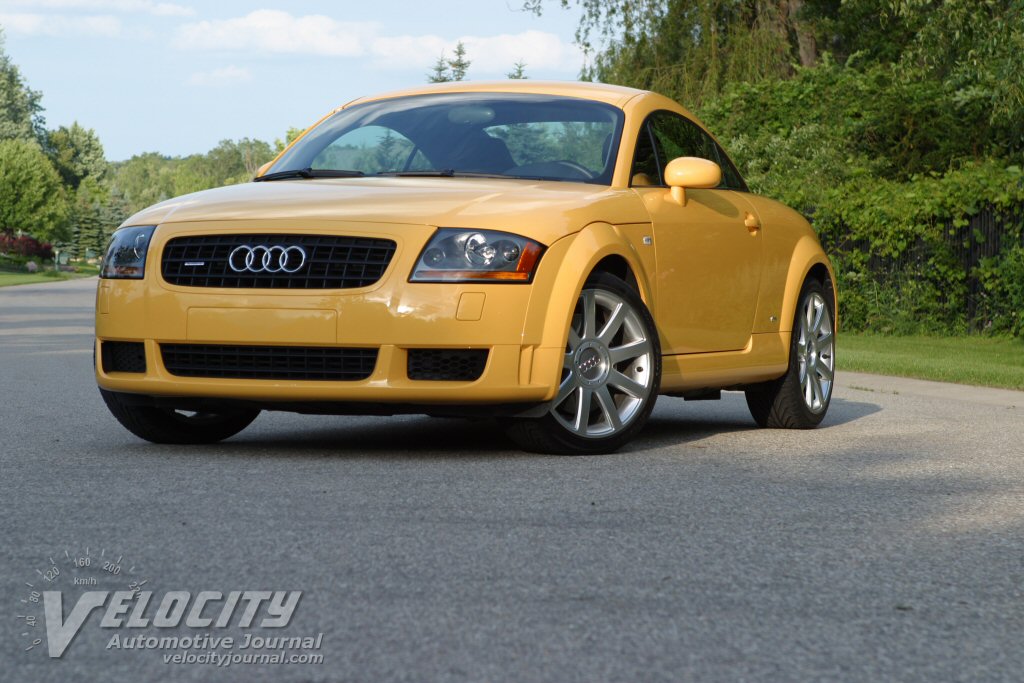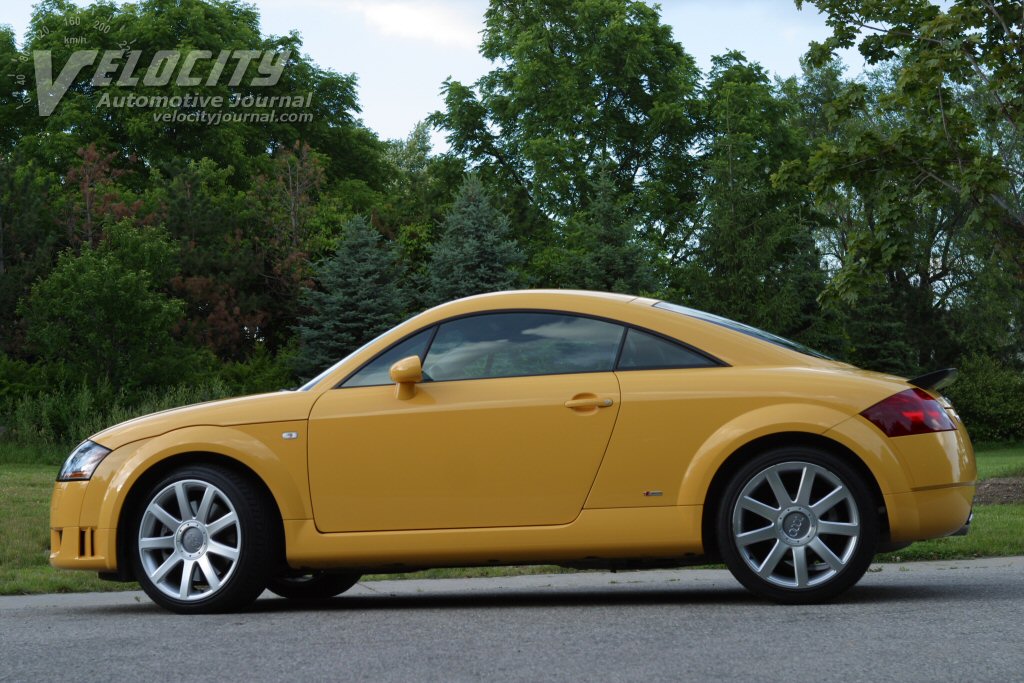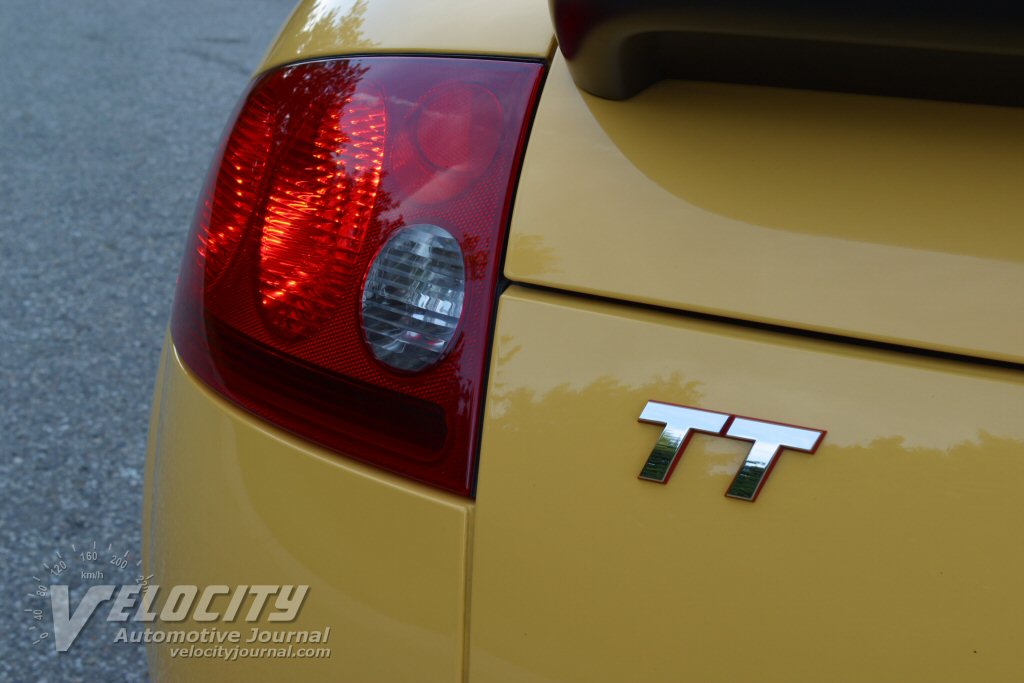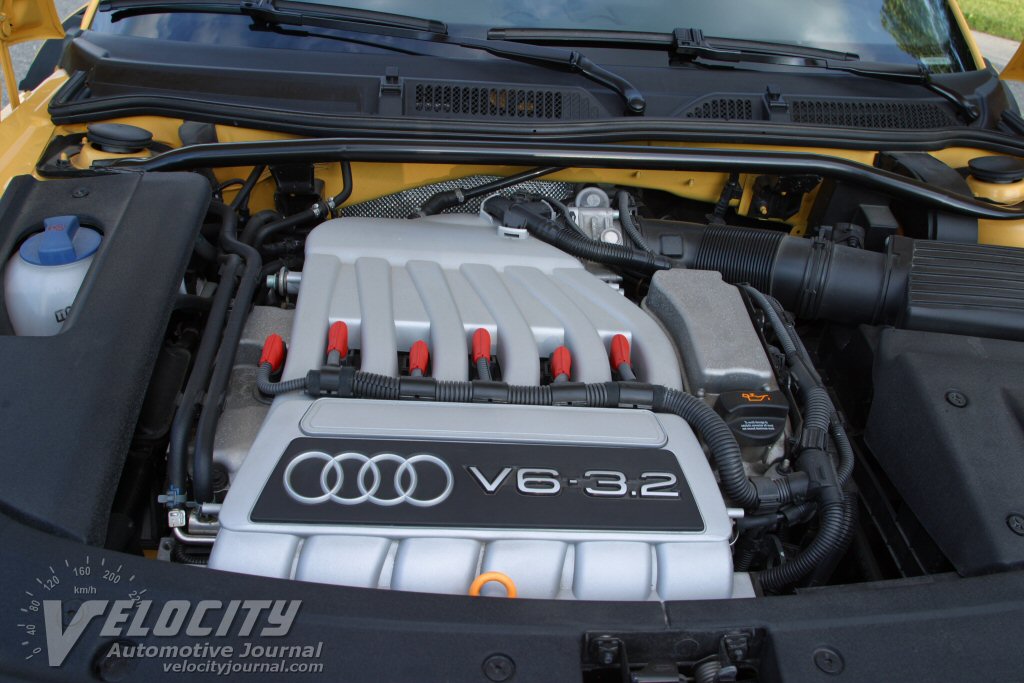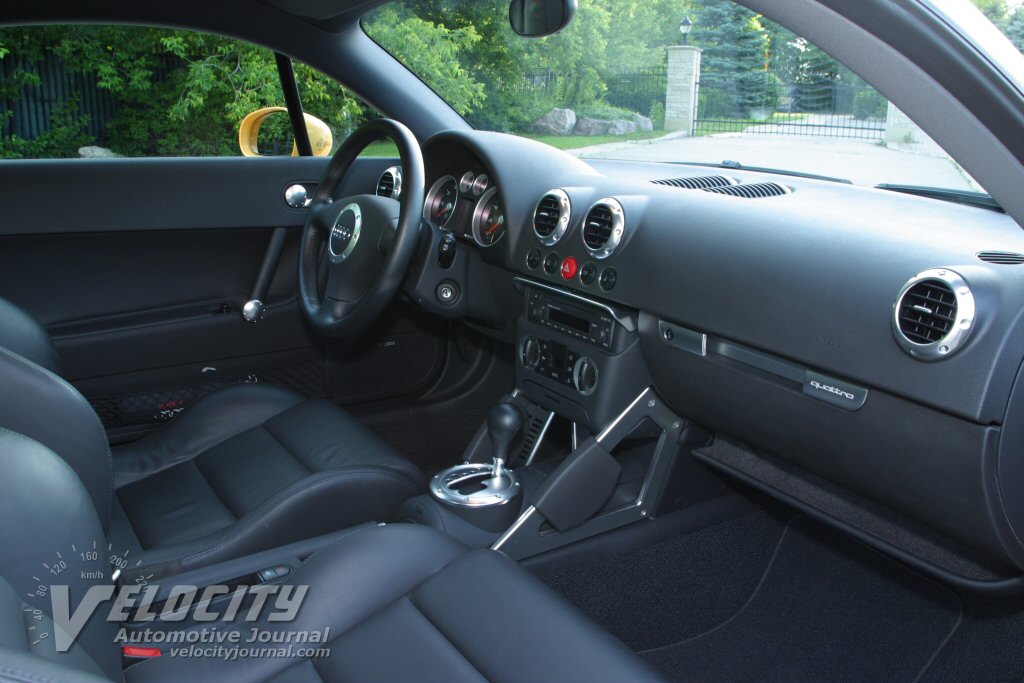2004 Audi TT 3.2 DSG6
06/22/2004
Shahed Hussain
The Audi TT has been a styling sensation ever since it was introduced at the Frankfurt Motor Show in 1995. The production model initially had a 1.8L turbocharged I-4 that topped out at 225 bhp. Since the BMW Z4, Nissan 350Z, and Chrysler Crossfire came with standard V-6 engines, it was clear that the TT needed a six cylinder powerplant to match its competitors.
The iconic shape of the TT still remains fresh and interesting. The bright yellow paint of the test vehicle suited the Audi's extroverted character perfectly. Aggressive 9-spoke 18 in. wheels with 225/40R18 performance tires are unique to the TT 3.2. The stainless steel fuel filler door evokes sports car racers from the sixties. Audi's new grille has not made it to the TT yet, which some may find a relief. Subtle 'S-Line' badges adorn the rear flanks of the TT 3.2. The mandatory rear spoiler mars the profile of the TT, but reduces aerodynamic lift in the rear of the car.
A firm, well-damped suspension gives the TT quick reflexes. Steering turn-in response is excellent, with minimal understeer. Quattro AWD ensures tenacious grip and safe handling. Low profile tires and stiff anti-roll bars keep the body flat around corners. The tire sidewalls transmit road impacts and noise to the body, which can be tiring over long distances. A short wheelbase and sport-oriented suspension tuning causes the TT to skitter over bumps and potholes.
Brake pedal feel is excellent, with a firm, progressive pedal effort and corresponding brake response. The brakes slow down the TT easily and quickly at highway speeds, with no drama. Brake dive is minimal, which ensures that the tires have a balanced brake load for shorter stopping distances.
Audi has made a major enhancement to the TT with addition of the flexible 3.2L VR6 engine, shared with the Golf R32. In combination with the innovative DSG6 gearbox, the TT 3.2 has the torque and gear ratio for any driving situation. The docile character of the 3.2L engine allows the TT to feel less high strung than the 1.8L turbo (which equips lesser TT's). The VR6 engine has a medium pitch rumble that really improves the sporty demeanor of the TT.
The DSG (Direct Shift Gearbox) is best described as a manual transmission with an electronically controlled clutch. The transmission has four operating modes. For normal driving, just select the 'D' mode. The 'S' mode shifts at higher RPM and holds the transmission in gear for greater engine braking. In addition, the shift lever slides into a separate gate for sequential manual shifts. In 'D' and 'S' mode, the steering wheel paddles (one '+' labeled paddle for upshifts, and '-' labeled paddle for downshifts) can be used to manually select gears. This allows temporary manual control while still letting the computer manage the shifts. If the paddles are not used for 10-15 seconds, the transmission reverts to full automatic mode. In any mode besides 'D' and 'S', the dash-mounted electronic display the selected gear. Shift quality depends on throttle opening. At full throttle, the DSG exhibits quick, smooth shifts. However, part-throttle shifts can sometime result in lurching, as the car porpoises up and down. Closing the throttle abruptly can also unsettle the suspension and body, due to engine braking. Of course, a manual transmission vehicle would behave similarly under the same conditions.
Audi interior design has been a benchmark for other automobile manufacturers, and the TT does not disappoint. Polished aluminum trim is used extensively to give an industrial look to the interior. The aluminum trim contrasts with the uniform dark gray interior color. A particularly striking feature is the embossed 'TT' logo on the aluminum cover for the Bose stereo system. As expected, interior material quality is impeccable. Trim fits are even and tight. Interior panels are finished in a uniform low gloss gray.
The dashboard gauges, lights, and displays are simply designed for maximum legibility. The circular gauges are trimmed with aluminum rings. Clear plastic gauge covers are coated with a glare-reducing anti-reflective coating. An informative multi-function digital display, ensconced between the tachometer and speedometer, shows stereo settings, gear selection, and warning messages as necessary.
The front leather seats are firmly padded, with effective side bolsters that are supportive and comfortable. The relatively narrow seats may not allow enough room for larger drivers. Rear seat space is laughable. Although the rear seats do exist, there is simply no legroom for the smallest children. Split rear seatbacks partially fold down to improve cargo capacity. The rear hatch allows access to the shallow rear cargo area. Even with the seats folded down, there isn't enough room for more than two small suitcases.
Some ergonomic aspects of the TT suffer due to the emphasis on style over function. For instance, the relatively small exterior mirrors are difficult to use effectively, because they are mounted too low relative to the driver's sightline. Combined with the narrow side windows and large C-pillar, lane changes can be somewhat chancy at times. A quick glance over the shoulder is recommended when switching lanes. Also, the low windshield header limits the view out ahead. It takes some time to get acclimated to the slit-like exterior view from the cockpit.
The Audi TT has always had a stylistic edge over its competitors, but the DSG transmission and 3.2L VR6 engine have really enhanced its appeal. The TT finally has the performance credentials to be a legitimate alternative to its potent competitors, with the unique advantage of AWD for unsurpassed traction and safety.

